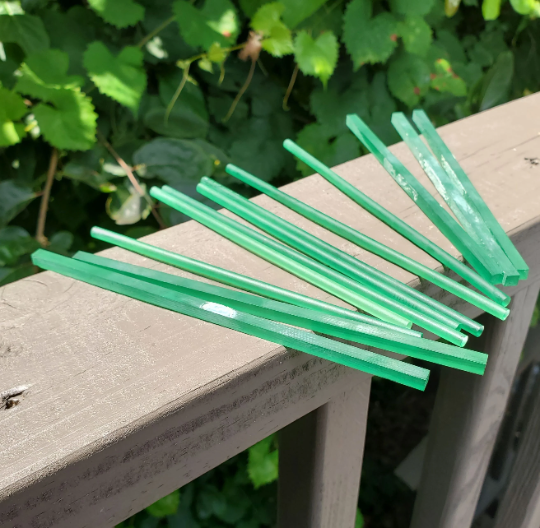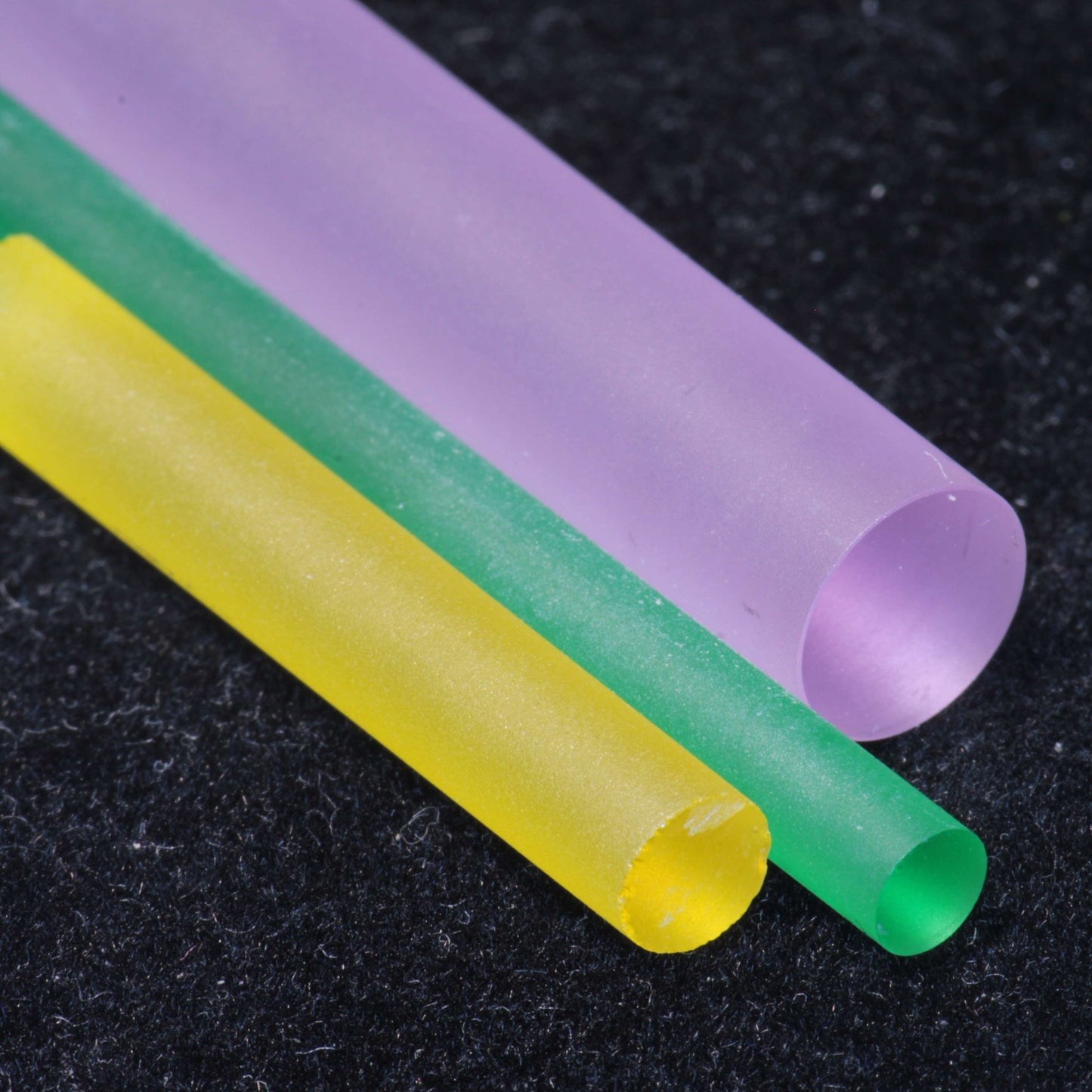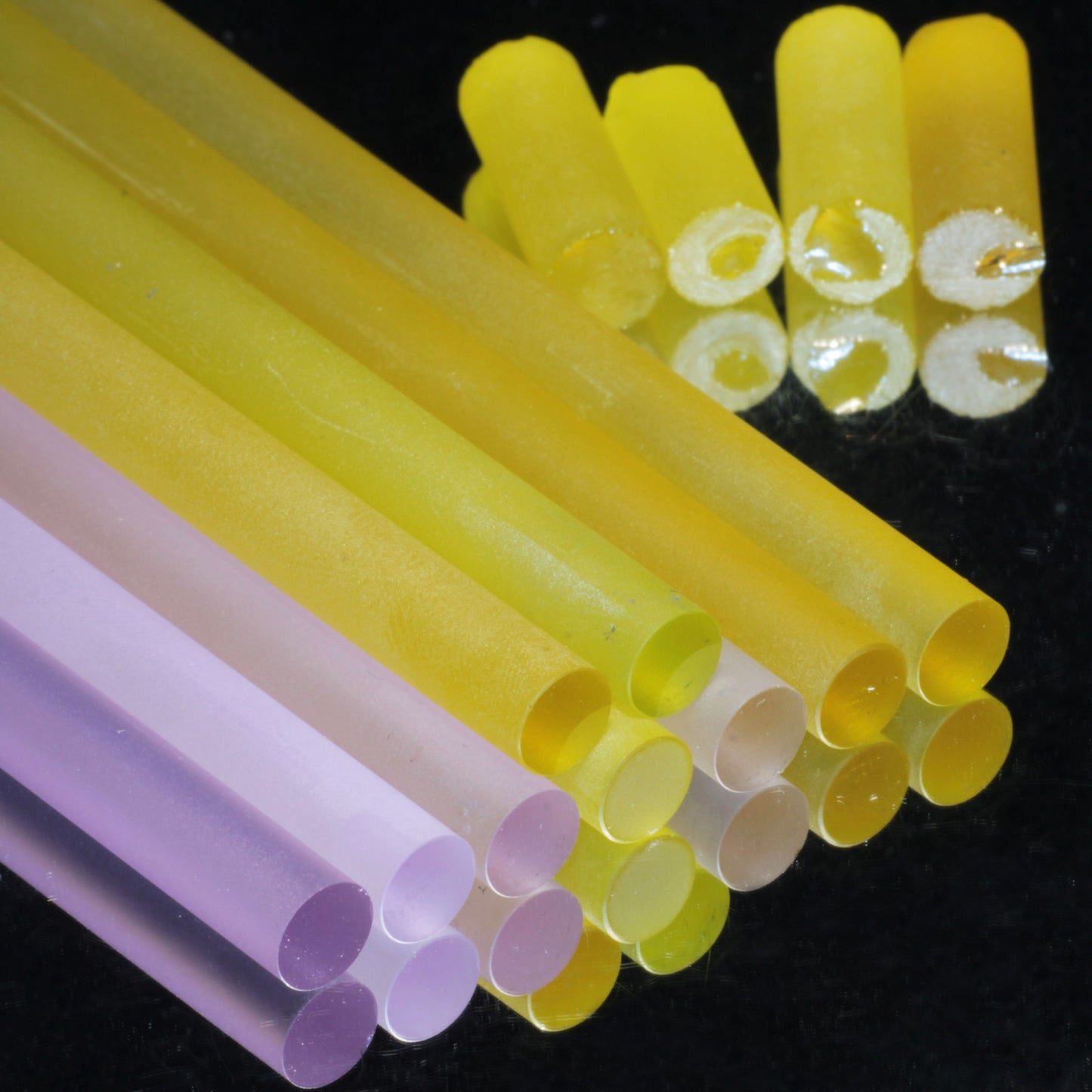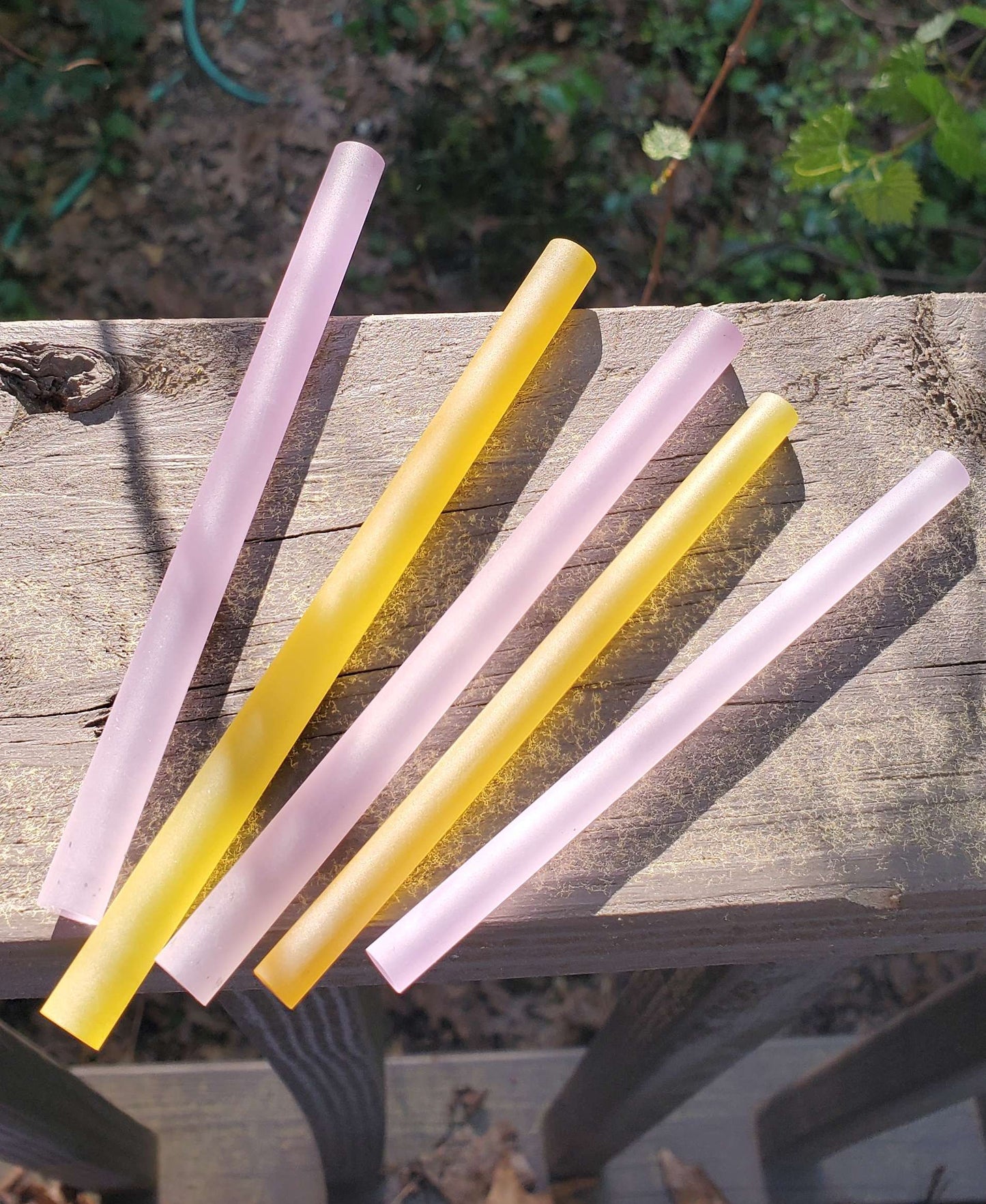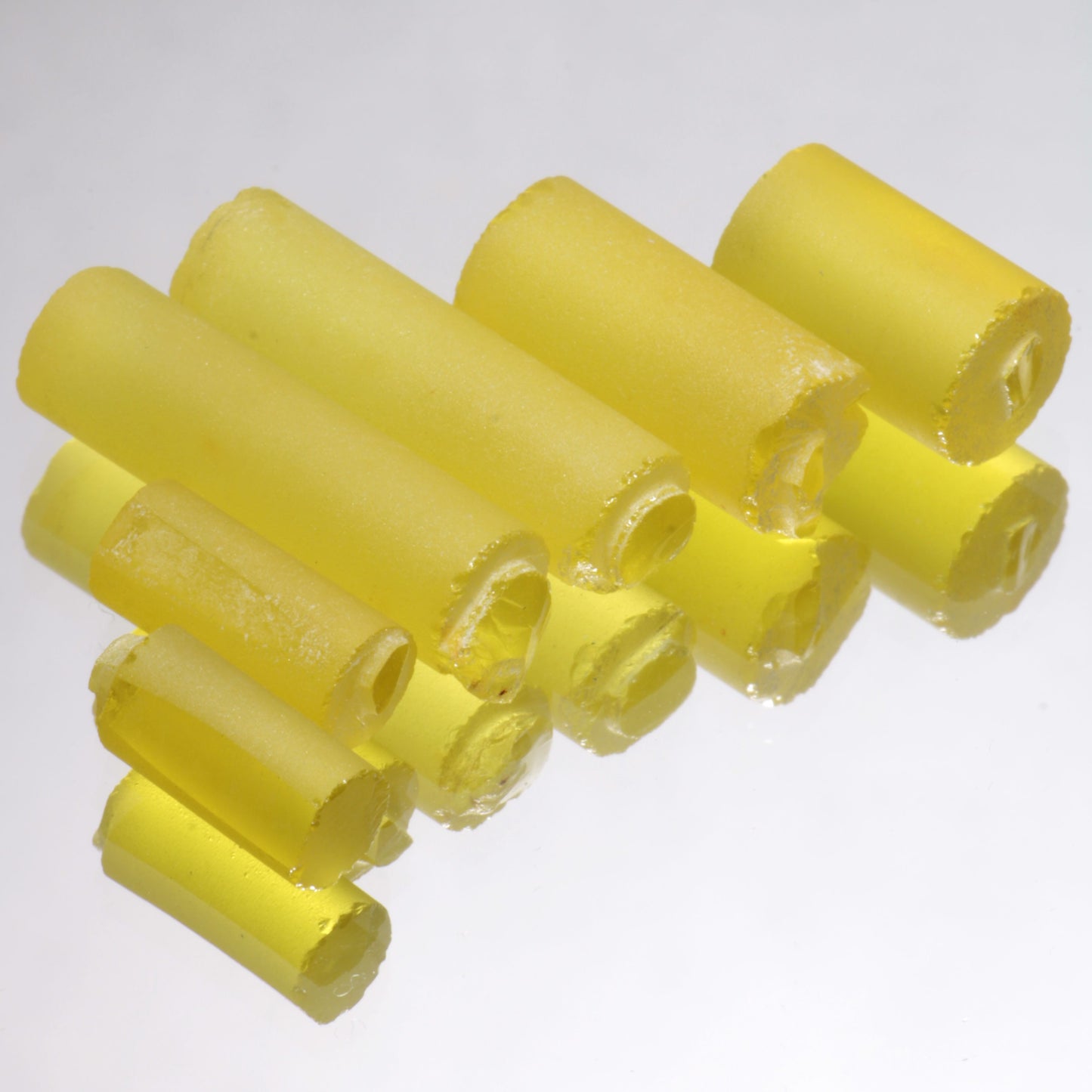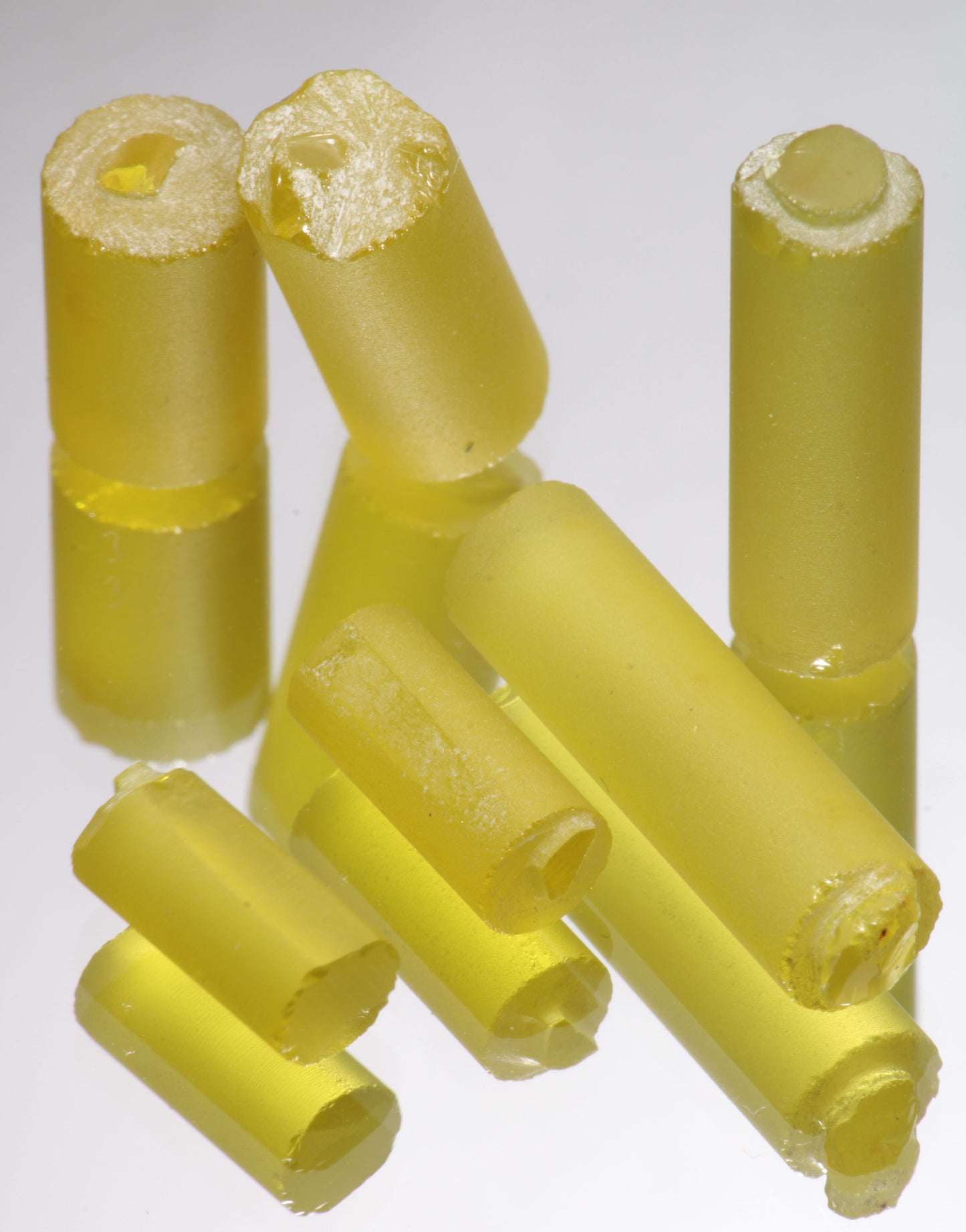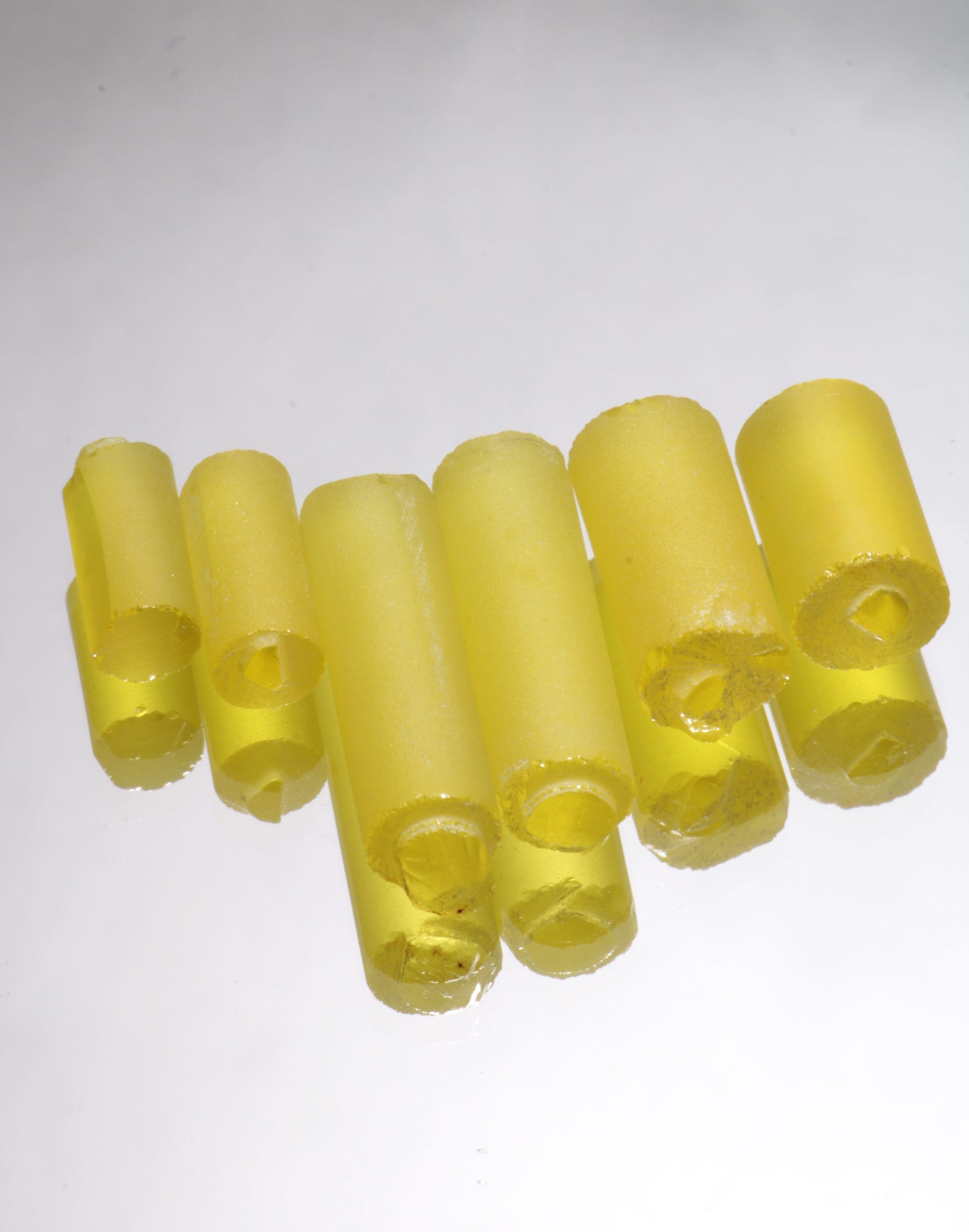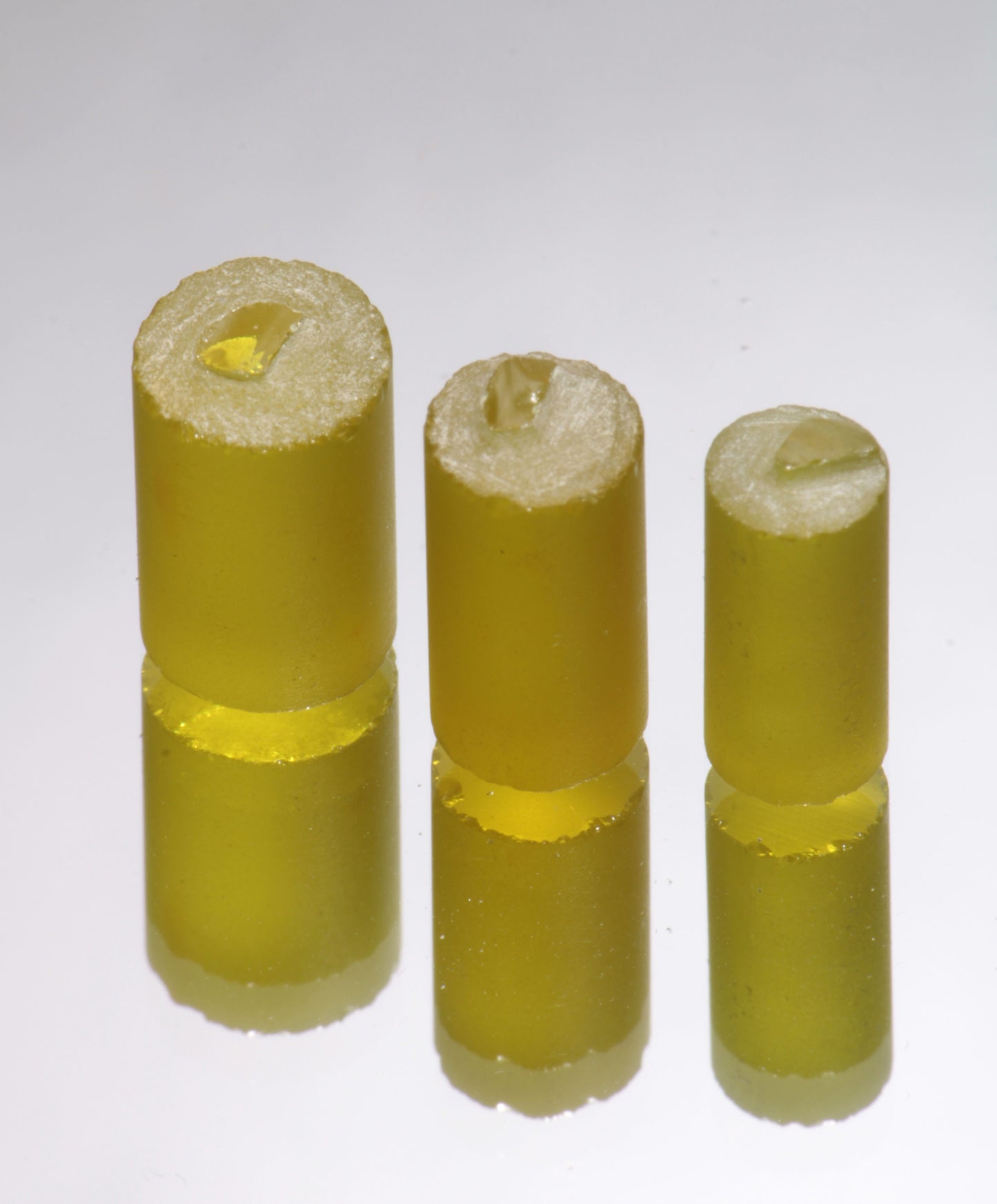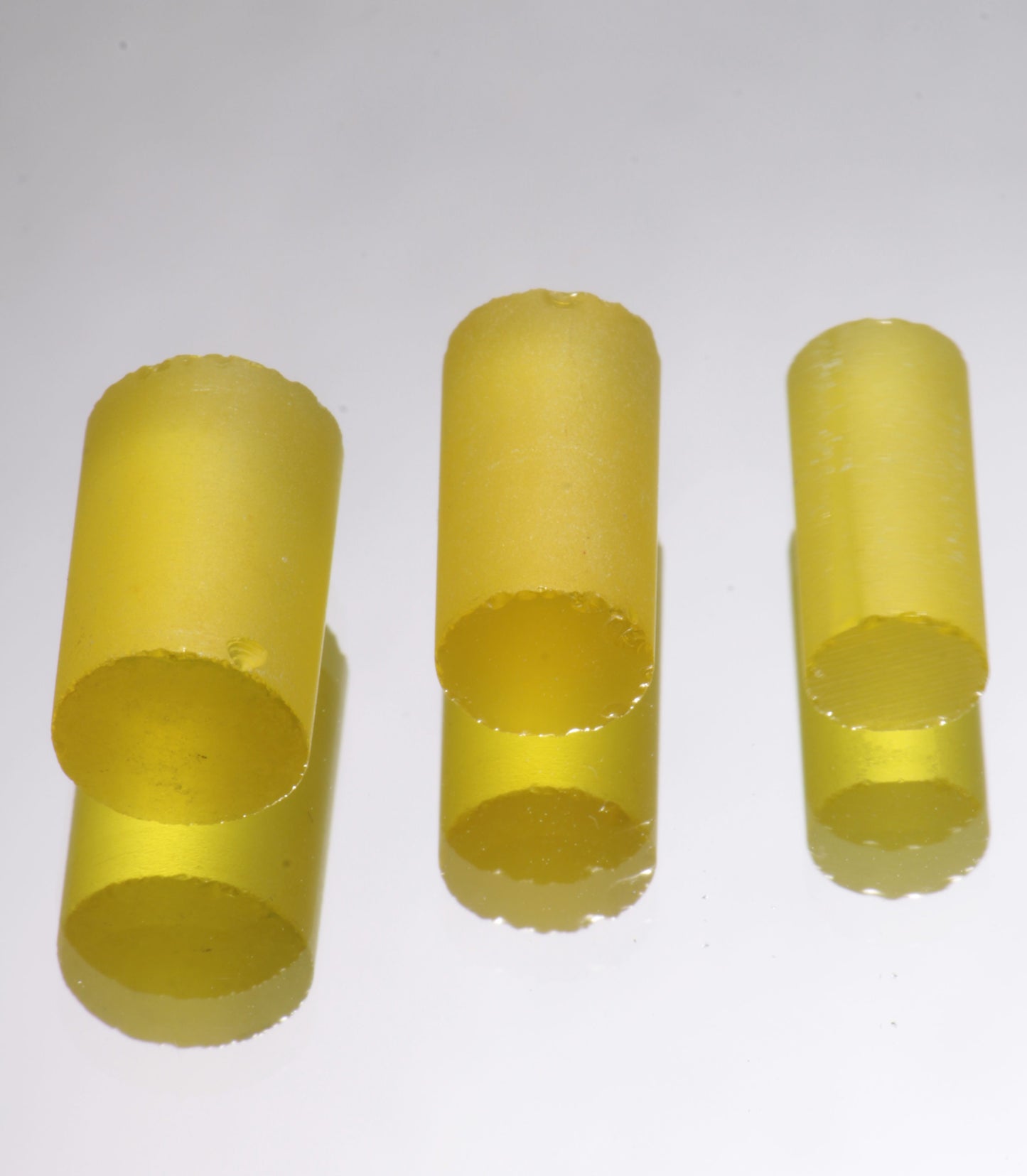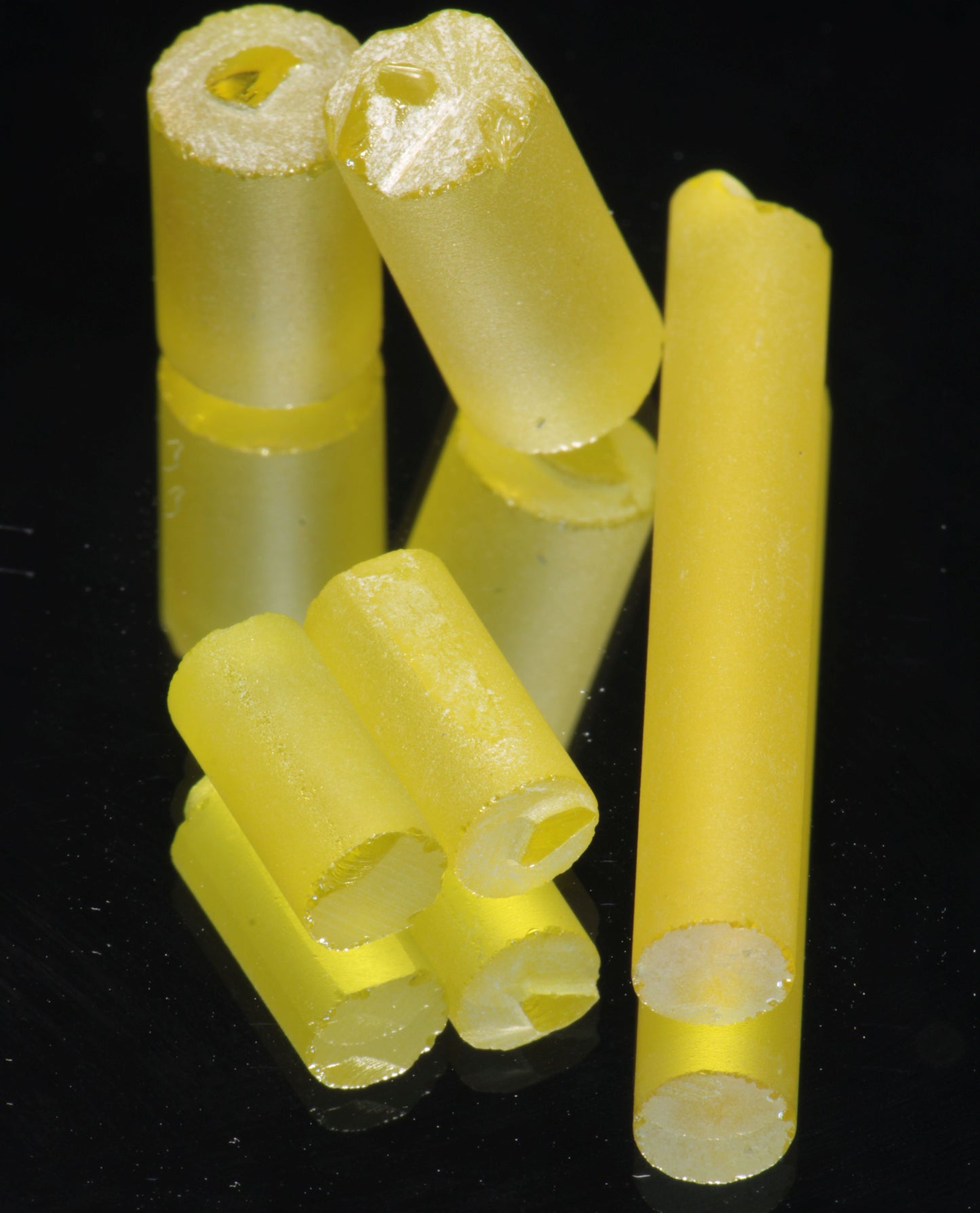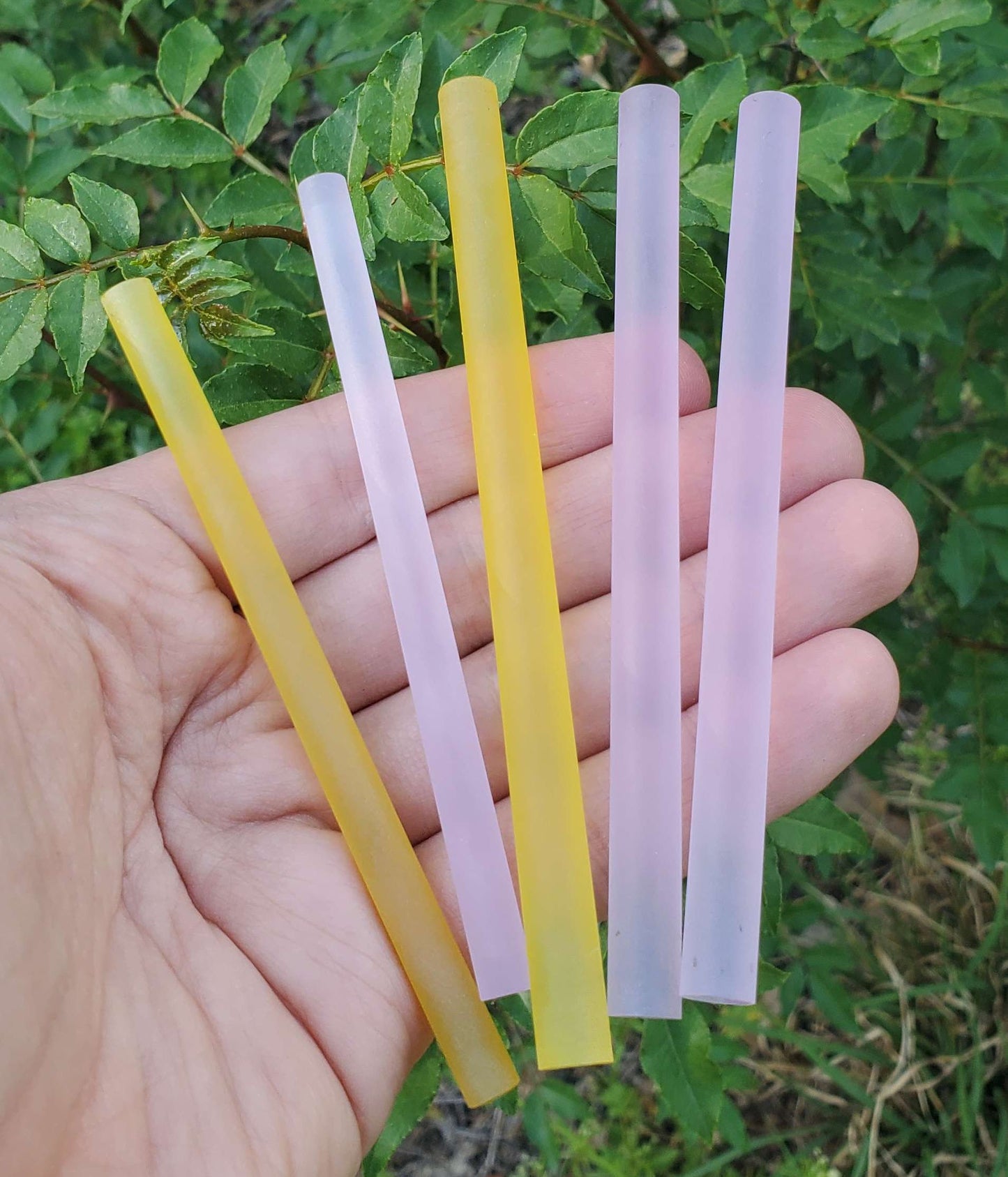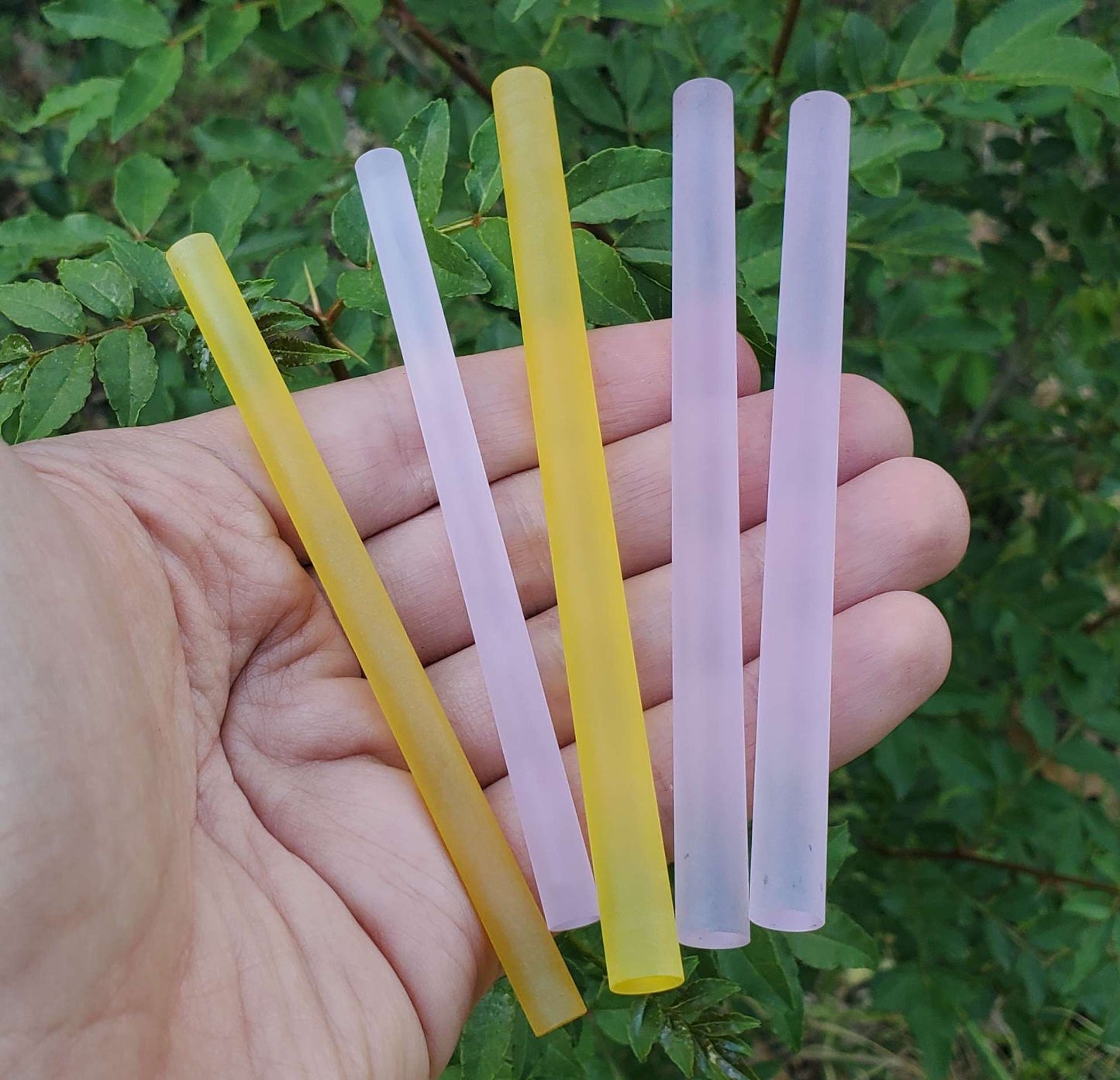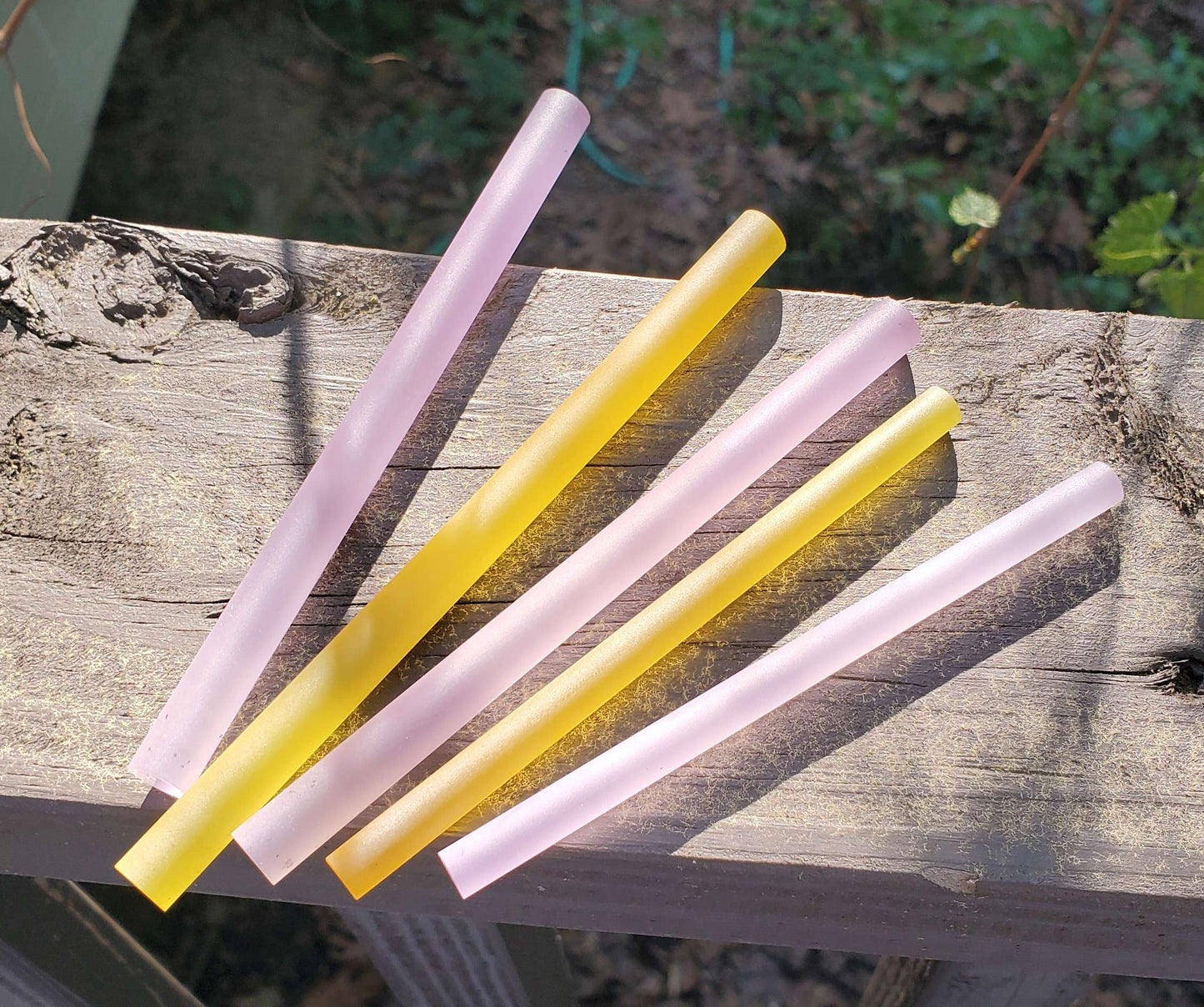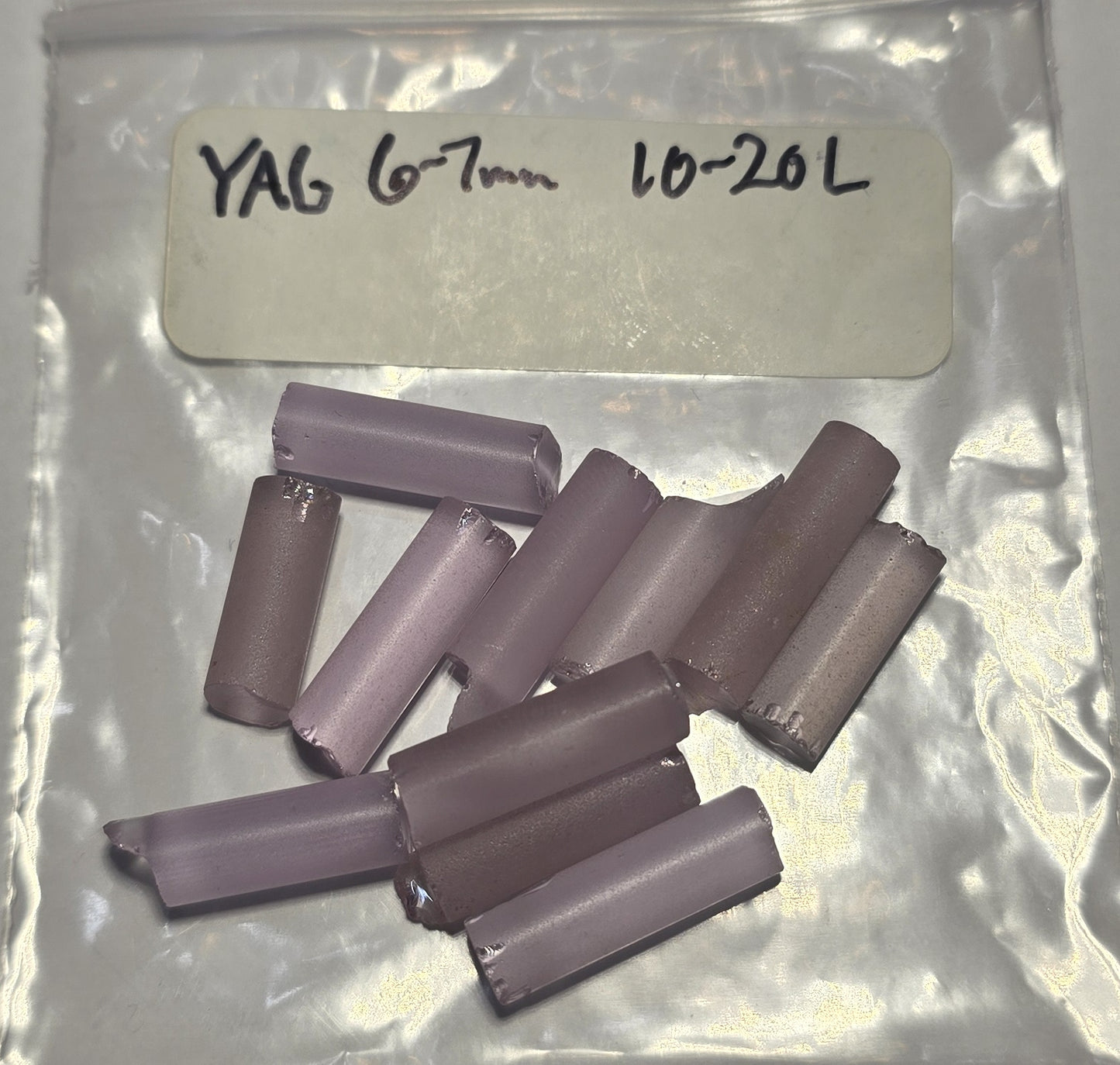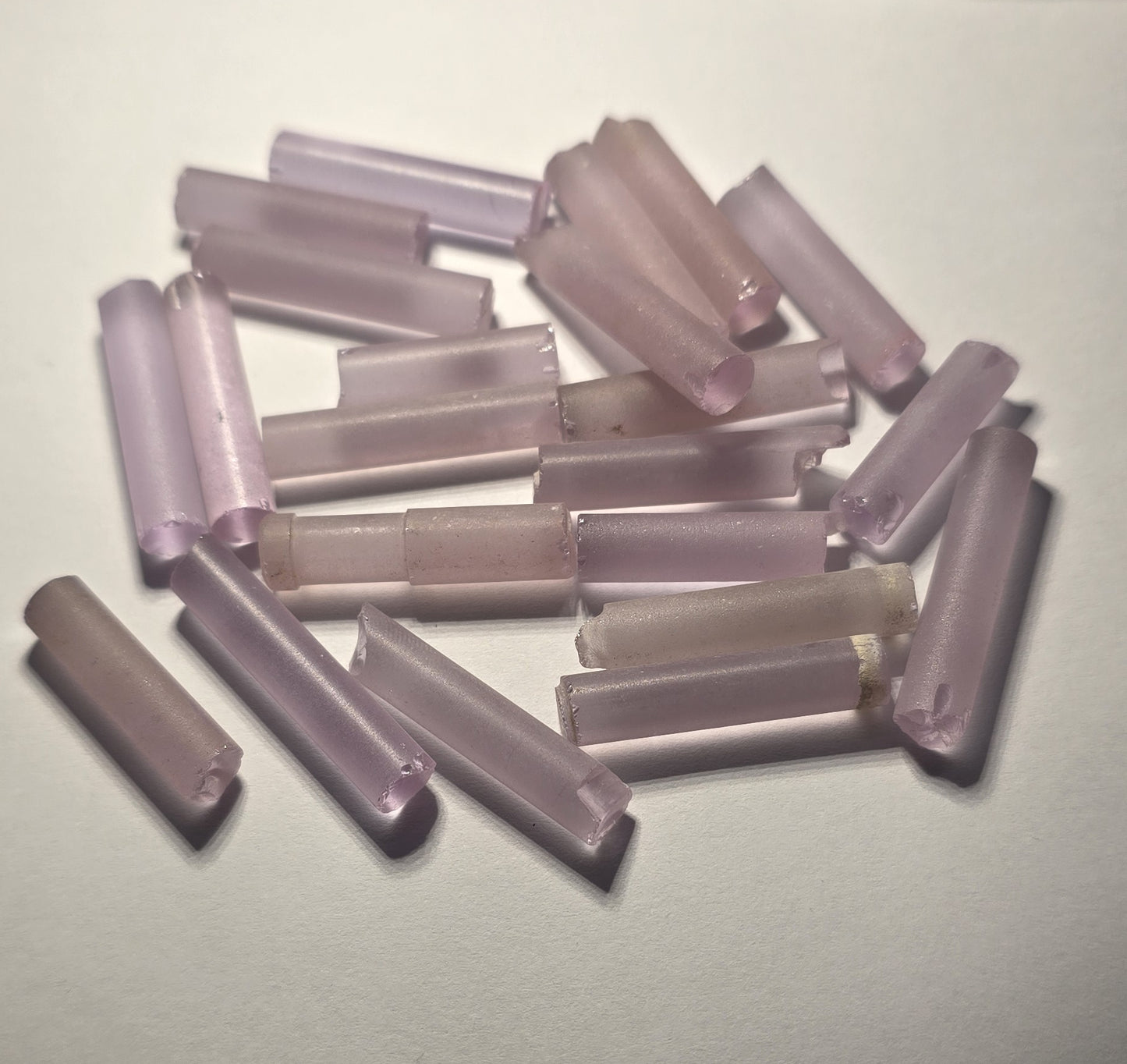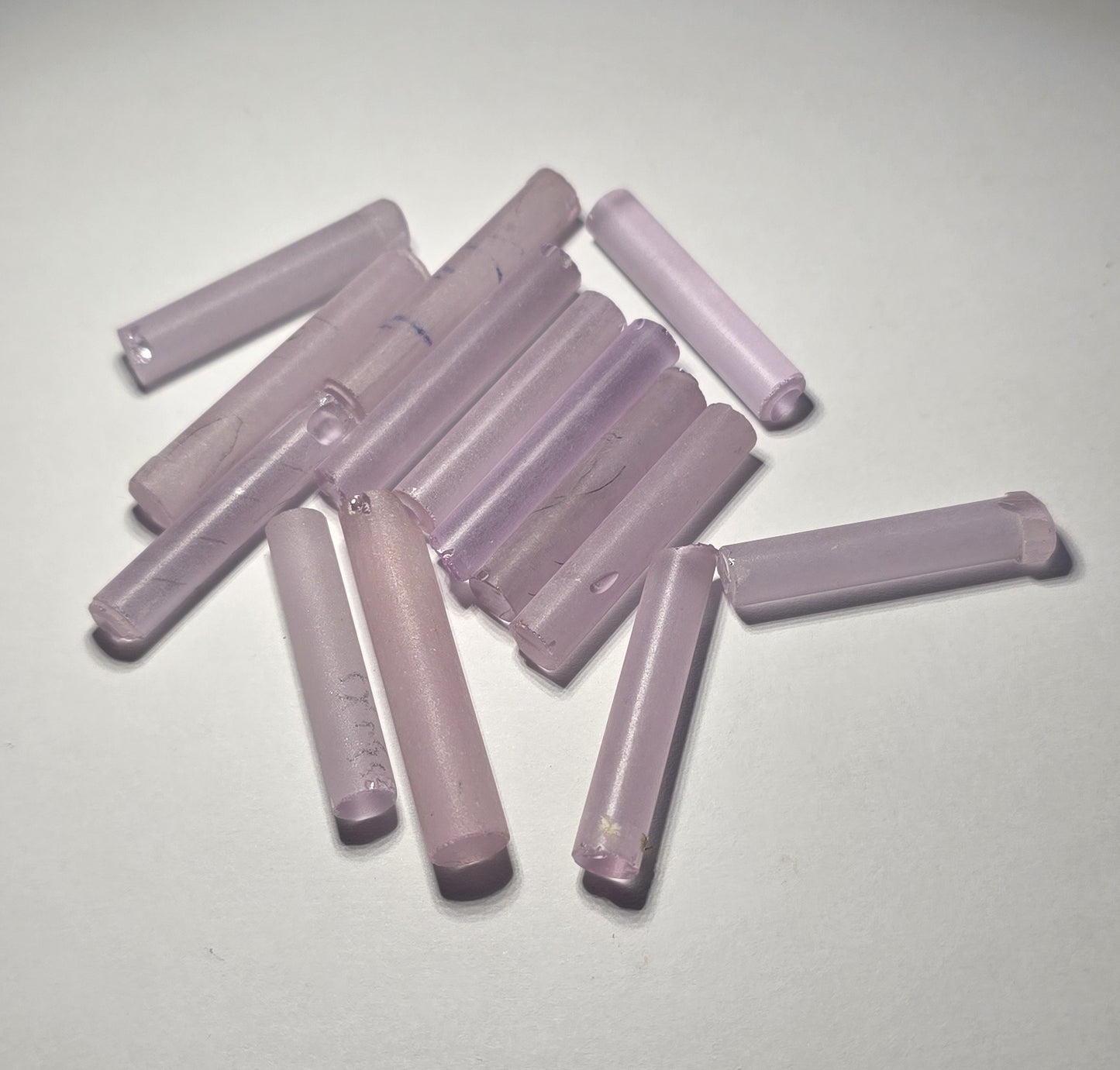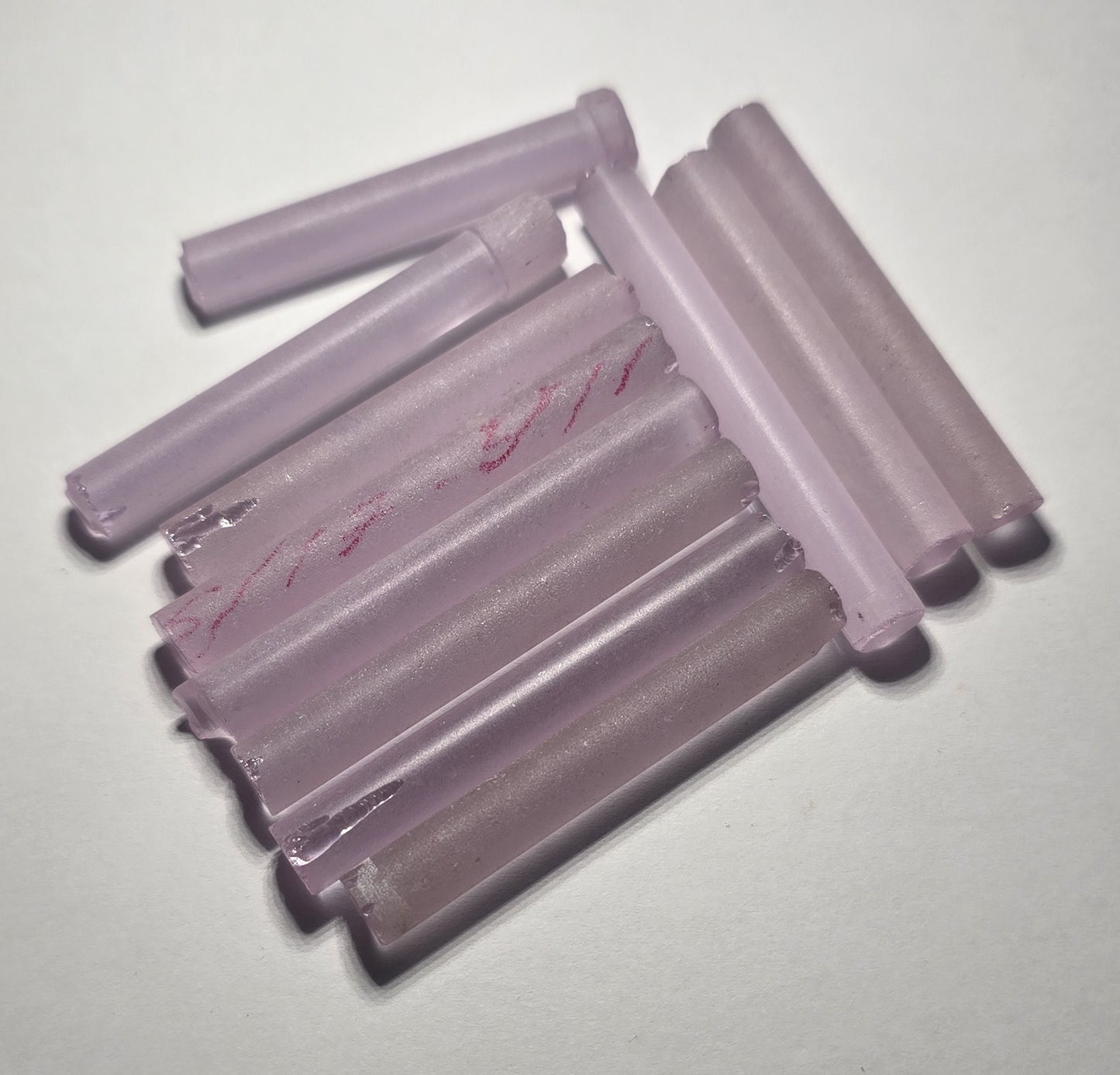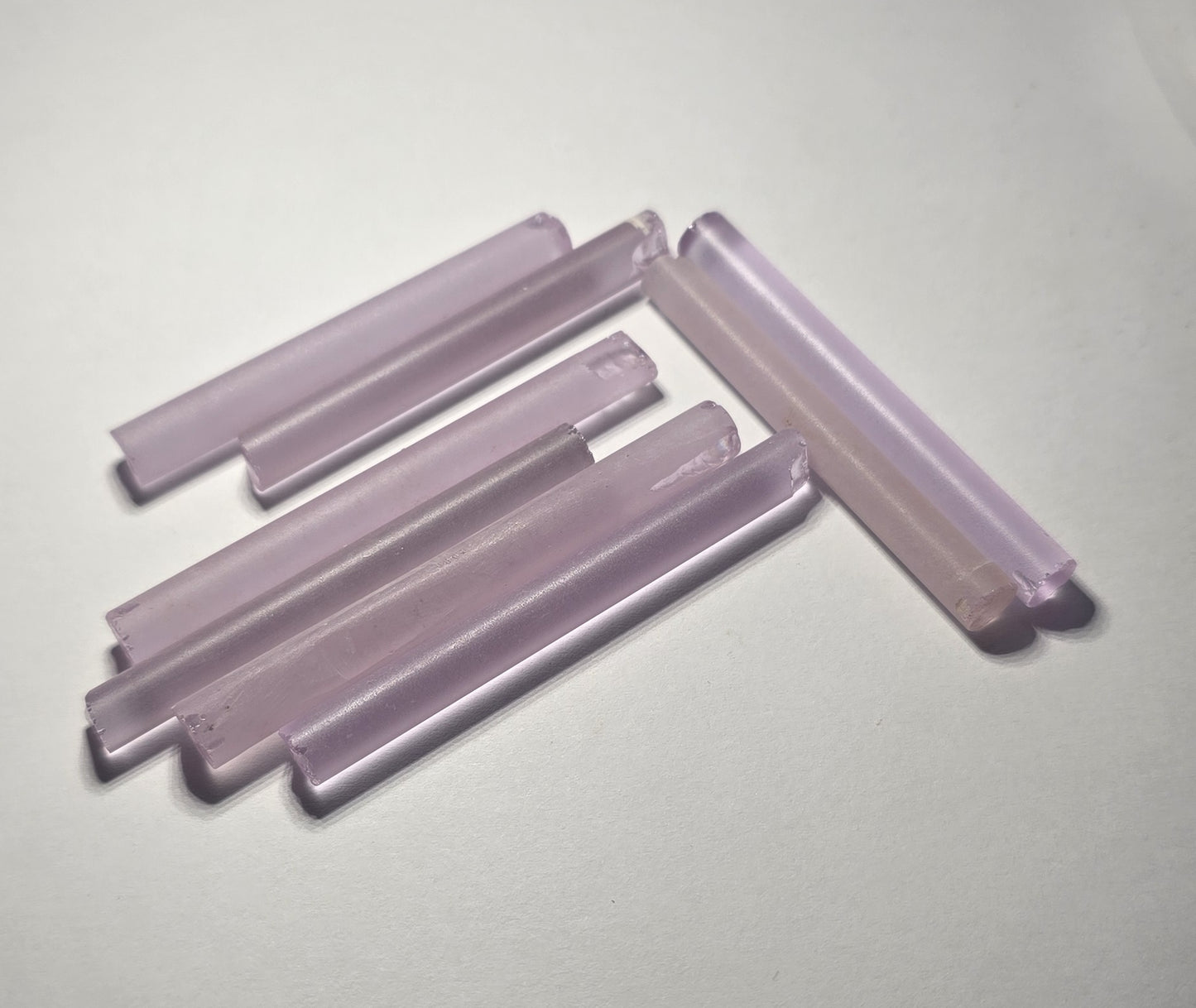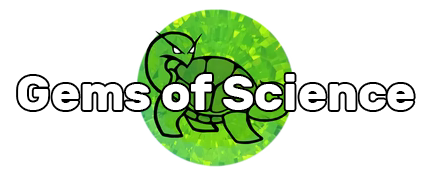YAG Laser Rods, Failed, Decommissioned or Offcuts
YAG Laser Rods, Failed, Decommissioned or Offcuts
62 in stock
Couldn't load pickup availability
These are partial and complete laser rods in a variety of different types of YAG (yttrium aluminum garnet), including pink and golden laser garnet ( Ce+Nd) and green laser garnet (CTH:YAG and Er+Cr:YSGG). Some are offcuts that didn't quite make it into final production or usage, others are decommissioned rods that lived a full career in a laser.
These laser rods were meant for use in solid state lasers. They would have had light pumped into them from the side, either by a lamp or by another laser, absorbed that energy and converted it into the powerful coherent beam that lasers are known for.
Neodymium makes YAG a versatile laser crystal, and Nd YAG lasers are the most versatile and widely-used. While the original Nd YAG lasers only added Nd it was soon discovered that Ce could act as a booster to its power. This means that depending on the application you might see crystals that only have Nd or ones that are almost entirely Ce with just a pinch of Nd. Pure Nd gives a color shifting purple-pink color while pure Ce gives a rich fluorescent yellow color--when the two are mixed you get an unusual pink, peach or golden yellow color depending on proportions that shifts depending on the lighting. These stones also show unusual dual fluorescence, with a mix of bright yellow and pink under shortwave UV and yellow-green under both blue light and shortwave UV.
CTH YAG is used in far infrared lasers for a variety of purposes including medical procedures and meteorological measurements. Like normal Cr YAG (aka Christmas Garnet) it has a super rich green base color, but the addition of thulium quenches the fluorescence, allowing it to be absorbed by the holmium instead of released as red light. This means the base color does not have to compete with a red glow and comes out even richer and purer, giving it a very rich and vivid color. Some of these are rods with polished ends, others are square and likely rod blanks (? or maybe just square rods).
